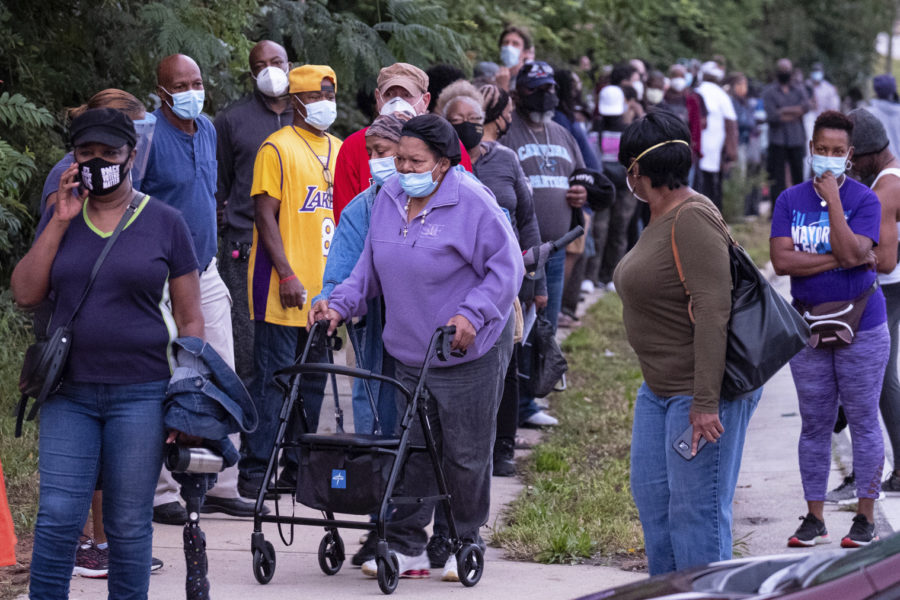In the fall of 2020, voters across the country waited in long lines to cast their ballots in a pivotal election, with press on hand to cover the action.
One Georgia TV reporter talked to an upbeat voter who said, “A lot of people have given up their lives to make it possible for us to vote, so standing here in the sun and checking my phone is not a sacrifice.” In Minneapolis, local news quoted a voter who waited two hours as insisting, "No matter how long it was going to take, I was going to get it done." Other outlets ran stories about how people danced to pass the time, only mentioning much further down in the pieces concerns that long lines could hinder people from voting.
When Christina Greer thinks about all the “inspirational” news stories she’s read about people for whom the mere act of voting has become an endurance sport, she’s not inspired by the coverage. She’s exasperated.
Research shows that minorities are more likely to encounter long lines to vote and that Black women in particular are willing to endure long waits at the polls to exercise their rights. But when reporters approach pieces in the vein of, "Oh my gosh, how beautiful is this? She waited 10 hours to vote,” says Greer, an associate professor of political science at Fordham University, “all I [see is] the story of voter suppression. How the hell is someone waiting 10 hours to vote?" Instead of explaining why certain communities had to wait in long lines compared to others, many news outlets frame it as a heartwarming story about an individual who is willing to make extraordinary efforts to exercise their franchise.
“That's not a feel-good story,” adds Greer, noting that reporters cover it “like this is the greatest thing since sliced bread." It’s a symptom of a larger problem, Greer explains: The media by and large is failing to add key context to stories about voting and hasn’t caught on that the Republicans have mounted a coordinated assault on voting rights in the run-up to the 2022 election. “My frustration with the press is that we're reporting on two parties as though they're both just trying to do what's right, and it's actually not the case. We have [to] be honest about what is happening."
The media by and large is failing to add key context to stories about voting and hasn’t caught on that the Republicans have mounted a coordinated assault on voting rights in the run-up to the 2022 election
In the year since the election, which saw a record number of votes cast, legislators in 19 Republican-led states from Georgia to Texas have enacted nearly three dozen laws designed to “make it harder for Americans to vote,” according to the Brennan Center for Justice. False claims of widespread voter fraud made by former President Donald Trump and his followers have triggered the recounting of ballots months after the election was certified, spurring calls for tougher voter I.D. requirements, limits on early and mail-in voting, and expanded voter roll purges. In Washington, Republicans have repeatedly blocked Democratic-proposed measures to protect access to the ballot.
Journalists covering voting rights have run up against a number of hurdles: Voting laws and practices vary widely from state to state, change periodically, and have technical aspects that take time to learn. At the same time, cash-strapped newsrooms continue to struggle financially, leaving fewer reporters on the voting rights beat. On top of all that, the tactics used to influence lawmakers and disenfranchise voters through social media have evolved.
As Errin Haines of The 19th* puts it, referring to impossible tasks once used to bar Black Americans from casting ballots, “21st century voter suppression is not jelly beans in a jar or bubbles in a bar of soap.”
As the 2022 midterms approach and the gerrymandering of election maps is in full swing, deep, nuanced, and consistent coverage of voting rights is essential to keep the public informed about the threats to their fundamental right to cast a ballot.
Growing threats to voting rights
About 10 years ago, Ari Berman wrote a piece for Rolling Stone, "The GOP War on Voting.” It forecast many of the voting restriction efforts of today, which “could prevent millions of students, minorities, immigrants, ex-convicts, and the elderly from casting ballots,” he warned.
Now, much of what Berman explained in that seminal piece is better understood — and openly stated: The Republican Party believes it’s advantageous to limit the number of people who can vote. Trump himself, in the run-up to the 2020 election, disparaged Democratic voting initiatives, saying of them, “They had things, levels of voting that if you’d ever agreed to it, you’d never have a Republican elected in this country again.”
After Trump lost and wasn’t able to pressure election officials — especially in Georgia, where he asked the secretary of state “to find 11,780 votes” — to overturn the results, Republicans in states from Alabama to Wyoming enacted dozens of strict laws that curbed absentee voting, gave more power to partisan poll watchers, eliminated same-day registration, eliminated polling locations, and in one case even gave partisan lawmakers in the state legislature the power to suspend county and municipal level election superintendents. These measures can have a disproportionate effect on minorities and students — many of whom often, but not always, align with Democratic policy positions and candidates.
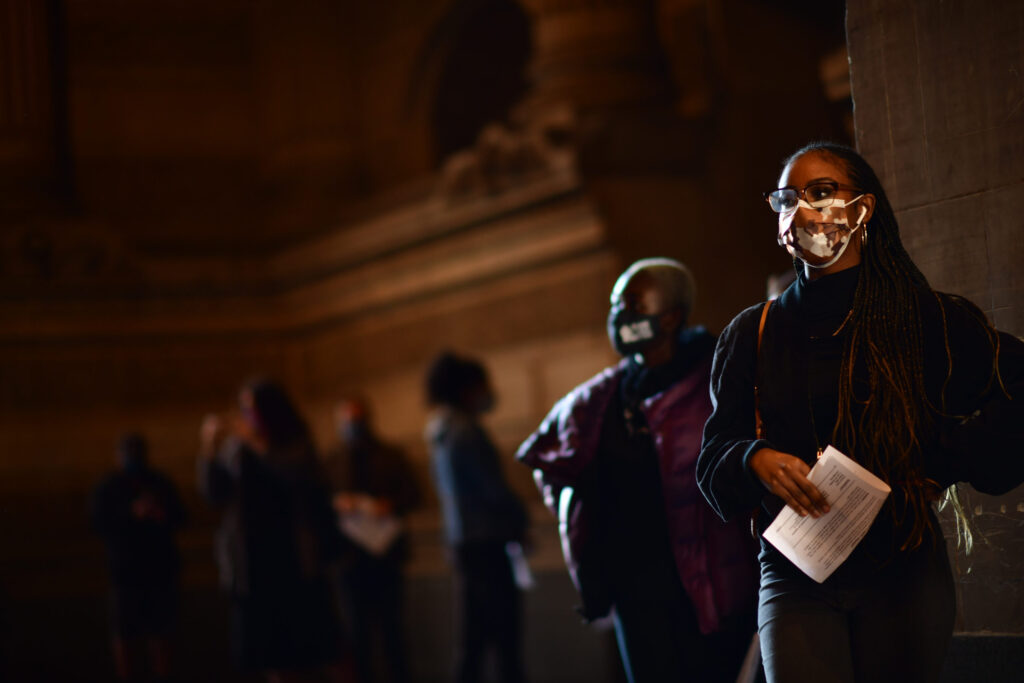
Few news outlets have had reporters dedicated specifically to covering the voting rights beat, says Berman, now a senior reporter at Mother Jones and author of “Give Us the Ballot: The Modern Struggle for Voting Rights in America.” The threats to those rights have been growing at the state level in a piecemeal way across the country, making it difficult for national media to encompass the entire story. "You'd see [a] story in The Times here or a story in The Post there, but it was all very much buried," Berman recalls. By the time Trump ran, “2016 was the first presidential election in 50 years without the full protections of the Voting Rights Act, and there wasn't a single question about voting rights at any of the presidential debates. The issue just wasn't part of the national consciousness, and [it] just wasn't thought of as a major story.”
Heading into the 2022 and 2024 elections, and with newly gerrymandered electoral maps starting to appear, journalists will also have to cover redistricting, a highly politicized process that takes place every 10 years.
In North Carolina, a Republican-led state with an electorate that splits roughly 50-50 between Democrats and Republicans in state-wide elections, the new map clustered Democrats into three districts, leaving open the possibility that Republicans win 11 of the 14 House seats. In states like Texas and Wisconsin, congressional and state legislative districts are being drawn in a way that favors white voters over Latino, Black, and Asian American voters — populations that are growing faster than their white counterparts.
This is the background against which the fight over voting rights is unfolding in Congress. As Republicans continue to block both the John Lewis Voting Rights bill, legislation that would buttress the 1965 Voting Rights Act, and the Freedom to Vote Act, which has provisions designed to make voting easier and reform the redistricting process, reporters naturally focus on the obstruction.
“It's easy to think about this as politics. It's easy to think about this as stale policy,” says voting rights and demographics reporter Alexa Ura of The Texas Tribune. “In reality, we're talking about individual people and their ability to exercise this right that we talk about the need to cherish and honor.”
Starting coverage on election day is too late
Reporters covering voting rights and election administration full time or most of the time remain relatively few compared to those who cover general politics or government. “Voting is a thing that we care about seasonally. It is not the city council that meets every week [or] the school you send your kid to every day,” says Jessica Huseman, editorial director of Votebeat, a non-profit that exclusively covers voting and elections. “This is something that most people engage with every two to every four years.”
Although voting rights may be a topic of national conversation, election administration is an intricate system, different in every state, that takes time and sourcing to master. State and county authorities set the rules for how their elections are run, buy the machines and software used to conduct them, train the poll workers, and count the votes. Local news organizations are uniquely situated to understand the nuance, but it’s an expertise that has been lost over time as local newsrooms have closed.
If you're starting work on voting rights on Election Day, you're much too late
When news staffing is short, coverage of this process — the “boring” but important stuff — can be the first to go. A 2019 study by the University of Texas at Austin found that, thanks to metrics pressures on media, news outlets spent more of their time covering local government activities "that will immediately or have already begun affecting citizens" versus offering more forward-looking work. It's a lesson that has a direct impact on covering the mechanics of how people vote — if you’re starting that work on Election Day, you’re much too late.
"Because newsrooms are so strapped,” Huseman says, “it's difficult to be like, ‘Hey, the machines that will be used in a year and a half are being purchased now’ — so it will be too late to cover how bad these machines are right before we vote on them. You need to cover that now,” when other pressing issues demand attention. Newsrooms “wouldn't interact with the criminal justice system by only covering it when someone is up on a murder trial … but there's no equivalent of that for voting,” Huseman points out. She urges newsrooms to view local government and civil rights coverage as related beats because the function of the first directly impacts the second.
When people think of news stories about voting rights, it’s perhaps easier to envision a segment showing a march with signs and chanting than one showing a hearing on poll site locations or the award of a contract for new ballot scanners. Think about it: How many Americans could name a single major voting machine manufacturer — and there are only a few dominating the U.S. market — before Trump allies tried to accuse Dominion Voting Systems of conspiring to rig the 2020 election? How many newsrooms regularly track not only new voter registrations, but purges of existing voter rolls or poll site closures from cycle to cycle?
Familiarity with local voting regulations and policies can give reporters a big leg up. Jen Fifield of the Arizona Republic was dubbed “Blue Pen Jen” during the Cyber Ninjas audit after she noticed (and tweeted) that workers at the Arizona Veterans Memorial Coliseum in Phoenix had blue pens, which potentially could have been used to alter ballots, instead of pens with red ink that would not be read by scanners. It was a small detail that got a lot of national pickup because it told a bigger story about the qualifications (or lack thereof) of Cyber Ninjas to conduct such a review of the vote, she says — and Fifield noticed it because she’d educated herself on the local rules about ballots and ink. "It gave me hope that local reporters can bring attention to issues like voting rights in ways that national reporters can't, because we're on the ground level,” Fifield says. (The Cyber Ninjas review concluded that Joe Biden had, in fact, won Arizona.)
Voting rights reporters like Fifield stress that understanding the election system before the voting begins is crucial. Get to know the people who actually run elections, not just those who run in them. For a start, election administrators have their own professional societies. Tour the places where registrations are processed and votes are tabulated. Examine ballot design. Put in requests for locality-specific datasets and download those that are publicly available. Reach out to the academics who make studying voting systems and rights their life’s work, beat reporters add.
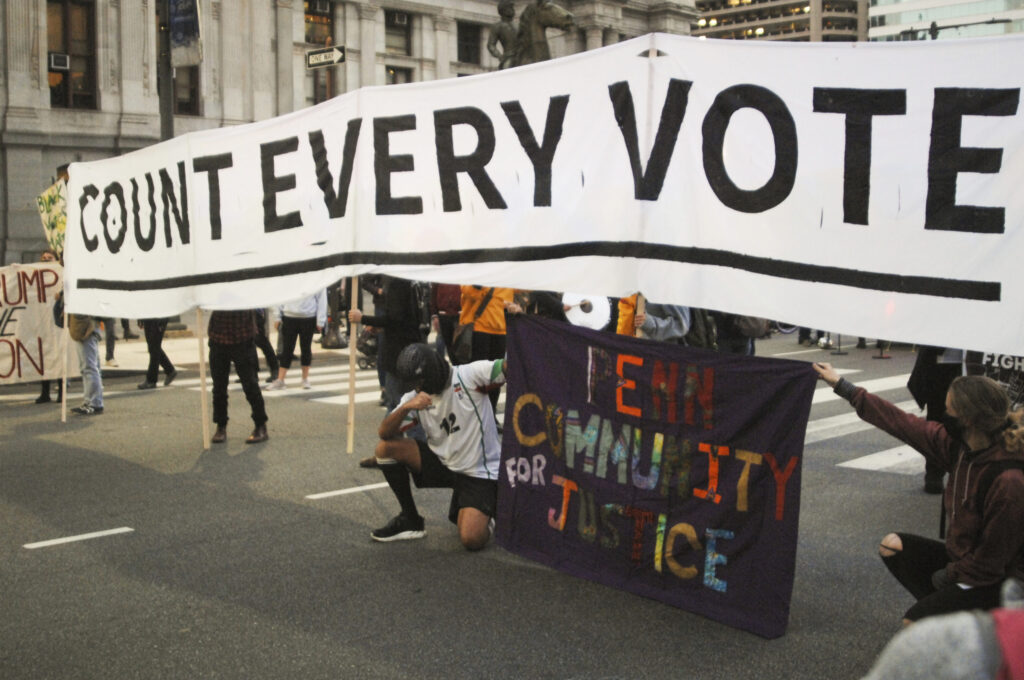
Covering voting across beats
Voting rights isn’t a single topic but can be covered across an array of beats. It became a huge business story — and even a sports story — in Georgia earlier this year, when Major League Baseball pulled its All-Star Game out of Atlanta in a public statement against restrictive legislation. Education reporters can look at how voting rights and civics are taught in schools; government reporters can dedicate part of a budget story to spending on election administration.
It’s also a criminal justice issue: Outlets like The Marshall Project, which focuses on topics such as incarceration, policing, and mental health, have reported extensively on restoration of felon voting rights, including a joint investigation with the Louisville Courier-Journal and USA Today Network that found only a fraction of formerly incarcerated people in four key states made it back onto the voter rolls in time for the 2020 election. The story pointed out that “None of the states in our analysis required corrections departments or boards of elections to notify newly eligible voters of their rights.”
Technological literacy has also become a bigger part of coverage of voting rights. And, reporting on how campaigns and dark money actors use technology to persuade voters — and in some cases, try to stop them from exercising their franchise — is an increasingly important part of this beat. Scrutiny of data caches can reveal what’s going on behind the scenes in a way that wasn’t previously possible. For example, even as campaigns scramble to develop new methods to motivate voters, they also work to deter others from showing up. Investigative reporting by Channel 4 News, a U.K.-based broadcaster, showed the Trump campaign in 2016 put 3.5 million Black Americans in a "deterrence" category, meaning it actively used social media and negative TV ads to discourage minorities in states like Georgia and Florida from voting for Democrat Hillary Clinton.
Civil rights organizations blasted the race-based profiling as “modern-day voter suppression.” The ads "included videos featuring Hillary Clinton referring to Black youths as 'super predators' which aired on television 402 times in October 2016 and received millions of views on Facebook," Channel 4 reported. Its analysis of a database used by Trump's digital campaign operation found that Black voters were targeted to receive the deterrent ads in much higher proportion than their share of the population in states including Georgia, North Carolina, and Wisconsin.
Reporters who cover voting say “bothsidesism” must be eschewed — particularly when covering claims of non-existent systemic voter fraud
Journalists on the tech beat and even those who cover defense have been pulled into reporting on this topic, particularly the cybersecurity angle as it pertains to instances of foreign meddling in U.S. campaigns and elections. (Elections were designated part of the country’s critical infrastructure in 2017.) The right to vote arguably loses meaning if Americans cannot confidently vote not only freely and fairly, but securely, and there’s evidence that not all those goals have been fully achieved. A 2020 Politico piece examined multiple issues states still had to address to make elections more secure, including replacing paperless voting machines, hitting the brakes on the drive for voting by internet, and changing the way election results are audited for accuracy.
Pro-voter bias
When it comes to voting-related legislation, for newsrooms short on time and staff, it can be tempting to slip into the horserace, hot take-heavy pack coverage. "The risk is that it's going to be covered [as an] inside-baseball process story [as] opposed to what the bill would actually do," Mother Jones’ Berman says.
Reporters who cover voting say “bothsidesism” must be eschewed — particularly when covering claims of non-existent systemic voter fraud, which are often used to advance restrictive measures like voter I.D. requirements.
After Trump and his supporters refused to accept Biden's victory in November 2020 and instead doubled down on false claims of election rigging, Grace Panetta, a senior politics reporter who covers voting rights for Insider, took apart leading claims of "widespread" fraud — largely those advanced by conservative groups like the Heritage Foundation — by laying out for readers that statistically, Americans are more likely to be hit by lightning than commit fraud through mail or in-person ballots. But when more liberally inclined sources attacked Kentucky as a hotbed of voter suppression for cutting the number of in-person polling places in the same election, Panetta fact-checked those claims, too, noting among other things that mega-voting centers (the Kentucky Exposition Center was big enough to accommodate 18 separate lines), early voting, and absentee voting without an official excuse required made for a reasonably smooth election in the state.
Being “non-biased and nonpartisan [is] extremely important to me, but I've really had to get more comfortable in covering this beat with [saying], ‘This is a lie. This is misinformation. This is not true,’” Panetta says. The both sides paradigm is “outdated when it’s not entirely, but disproportionately, leaders [of] one political [party] claiming that elections are rigged or spreading this kind of misinformation for political gain.”
Just recently, Panetta was among the many critics of The Wall Street Journal’s decision to publish a letter to the editor from Trump himself, in which the former president recycled many of the debunked claims of a rigged election in Pennsylvania. She tweeted, as part of a thread, "I don't understand how you can live through the past year and think, ‘ah yes, letting people make up their own minds about 'bananas' claims on the integrity of US elections has worked out great! let's keep laundering them to a mass audience with no fact-checking!’"
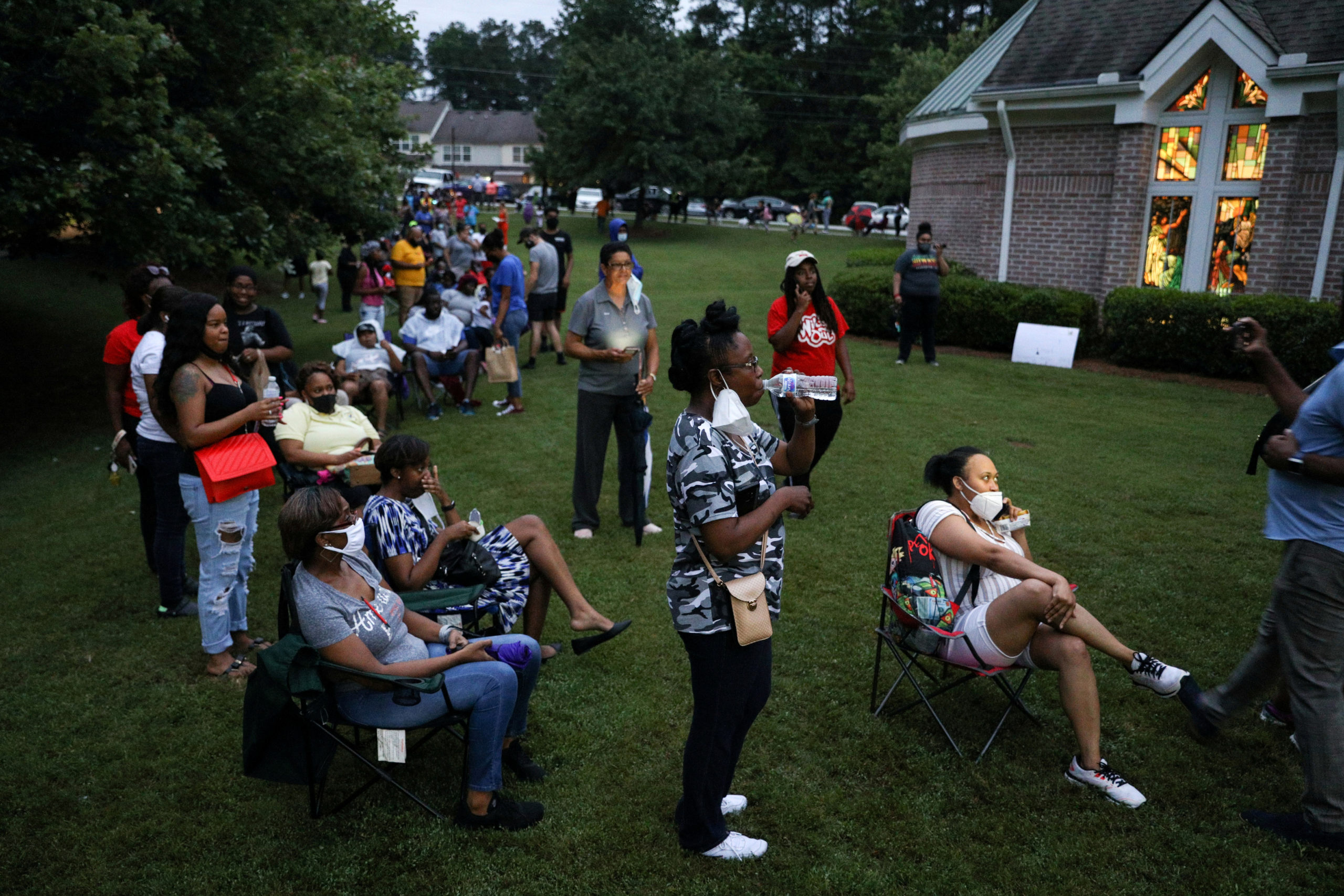
The language reporters use to cover voting matters, too. What one group refers to as “voter suppression” is framed by opponents as measures to shore up “election integrity” — even in the absence of evidence of a fraud problem. The dichotomy of language reflects the split in American attitudes toward who’s to blame for U.S. democracy being under threat. The best course is to stick to the plain facts and not engage in what Berman of Mother Jones calls “he said-she said coverage” of voting.
Covering voting rights is a beat "where you can do a lot of showing-not-telling just through your work, in terms of just illustrating, ‘What is motivating this? Who is being targeted by it? Why is it even happening the first place?’" Berman says.
Going a step further, "I don't think it's necessarily bad for the media to have a pro-voter bias. That's different than having a pro-Democratic bias [or] an anti-Republican bias," he argues. "I have a pro-voter bias; I'm for policies that expand access to the ballot. I don't think that should make me a progressive or partisan sympathizer."
Voting rights as service journalism
Covering threats to the right to vote — or, at least, doing it well — is inextricably linked to what even the most dedicated beat reporters admit can be pretty dry stuff. It’s a lot easier to focus on something relatable — even if it isn’t really the biggest issue. The classic example is the reams of coverage of Georgia’s ban on giving water (or food) to someone waiting in line to vote, which is easier to understand and visualize than the technical aspects of I.D. matching or who has the power to certify election results.
“One of the best pieces of advice I was given for covering voting rights and elections was to think of it as a customer service story,” says Georgia Public Broadcasting's Stephen Fowler, who's reported extensively about his home state's election-related tumult and hosted the GPB podcast “Battleground: Ballot Box.” “Taking these wonky changes and proposals and laws and obstacles and centering it on the voter and how they're impacted [goes] a long way towards connecting abstract theory [to] how it actually impacts people.”
"I have a pro-voter bias; I'm for policies that expand access to the ballot. I don't think that should make me a progressive or partisan sympathizer." Ari Berman, Mother Jones
Case in point: Fowler’s work on a data-driven 2020 investigation of how cuts to the number of poll sites in predominantly Black neighborhoods added up to longer, frustrating waits to vote. During the June 2020 primary, the average wait time after 7 p.m. was 51 minutes at Georgia polling places that were 90% or more non-white; at sites that were 90% white, it was six minutes. Georgia voters had roughly 330 fewer polling places in June 2020 than they had in November 2012. Between 2012 and 2020, the number of voters served at the average poll site jumped 47%, the piece reported.
"I think universally, people can empathize with [waiting] in line for hours to cast a ballot," Fowler says. "Somebody saying they waited in line four hours because their polling place is overcrowded because the population doubled and the number of polls stayed the same — that's something that somebody can see as a customer service story.”
If outlets fear that covering the nitty gritty aspects of election law and administration is a recipe for flat traffic numbers, Fowler’s experience proves otherwise. He says a March explainer he did on Georgia’s new 98-page “Election Integrity Act” got more than 500,000 views.
At Insider, besides voting rights, Panetta covers general politics and breaking news, as well as aggregates stories, "because I do have traffic goals to meet. That is how my performance is measured," she says. But, she credits savvy newsroom leaders with still giving her the space to dedicate time to voting rights. "I think that is a really important lesson for editors: [Let] your reporters write about something that might not be taking off or blowing up at first, because it could be the biggest issue in the news cycle in a few months." Building that fluency with the topic also lays the groundwork for deeper dives, such as Panetta’s examination of the distinct challenges to voting rights and access in Native American communities.
Haines, a former AP reporter, widely covers civil rights, women’s issues, politics, and social justice for The 19th*. She voted in the 2020 election in Philadelphia in person because the mail ballot she’d requested never showed up. “In the city where the Constitution was written and signed, where we celebrate the founding principles of democracy," she had to wait four hours to vote, she says.
As a journalist — no less for an outlet named for the amendment granting women, although not all women, the vote — Haines says she’s cognizant of having had the privilege of being able to spend half a day waiting to cast her ballot. "The people who I saw walking out of line, who were mostly Black and brown, who could not afford to wait, [that's] not going to be lost on me," Haines said.
Part of the answer to better voting rights coverage is diversifying the pool of people who cover civic issues. Black women, Haines notes, vote at high rates because they understand the stakes. “You put a Black woman on a story about voting, and they are going to get it,” she adds.
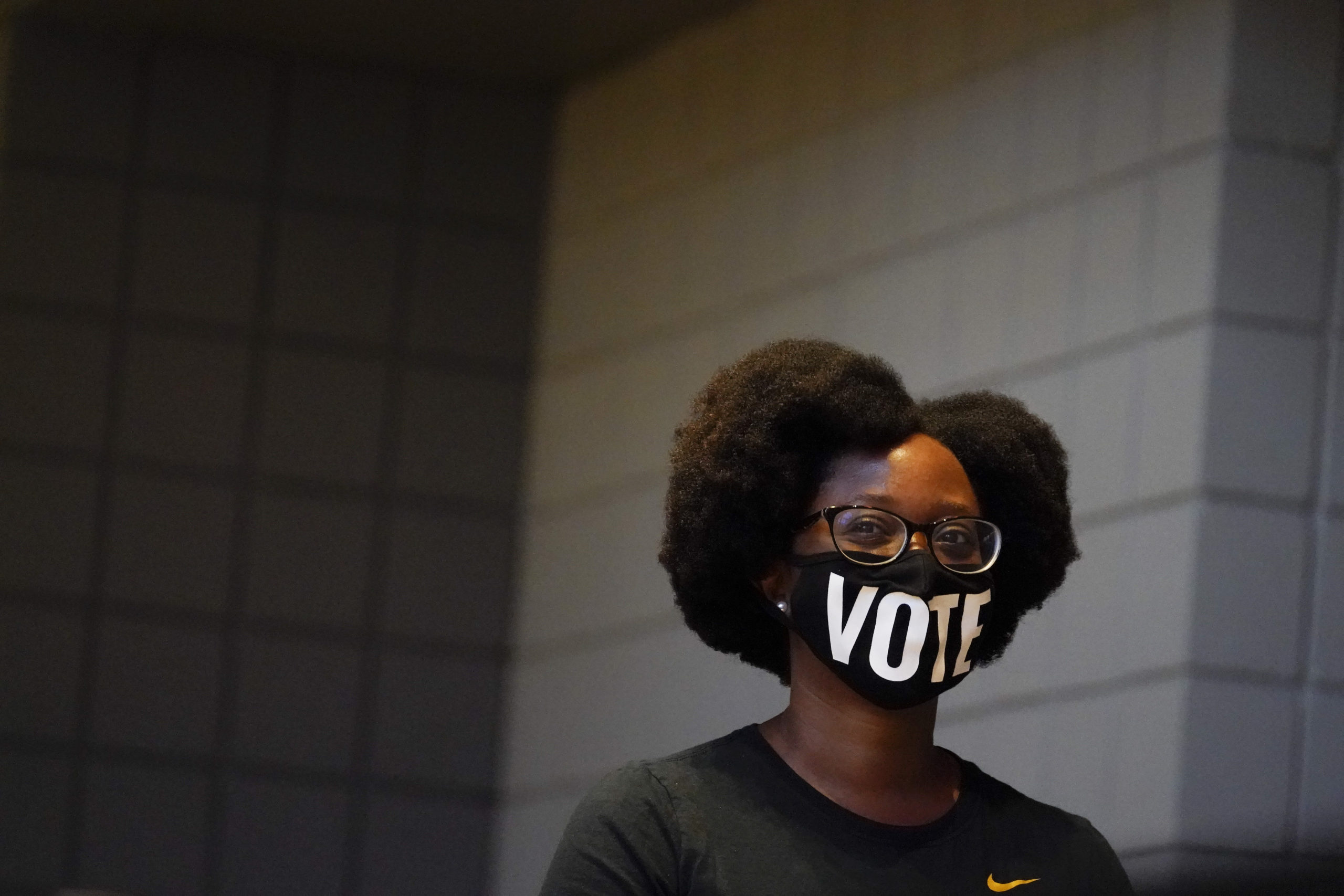
Fordham University’s Greer, who is writing a book on Barbara Jordan, Fannie Lou Hamer, and Stacey Abrams, argues that to cover voting best, journalists need to understand and synthesize the intricacies of voting laws, the history of race and racism in America, party politics, and shifting migration patterns. “Many journalists don't understand race or class,” she adds, noting that there's a danger of "group-thought" among reporters, particularly if influential outlets assemble their staffs in timeworn ways and are "not really thinking about the value of journalists who may have come from a different route or different community." To help combat this, she says, "We have to figure out a way [to] support local journalism so that people who are closest to the ground, who understand the nuance of a community, are actually reporting on it.”
For Ura of The Texas Tribune, having grown up in a "lower socioeconomic" border community reinforces “my view on the more natural barriers that can exist that keep people from voting," Ura says. Her reporting on Texas Senate Bill 7’s voting restrictions, for example, often noted that curtailing poll site hours could have an adverse impact on the ability of shift workers to cast a vote. Speaking Spanish also gives her an advantage that she uses to communicate with voters and assess the quality of the Spanish-language materials that the state and county are required to provide. “Acknowledging that not everyone votes in English is a really crucial part of the beat” that deserves more attention than it often gets, she says.
Voting rights and data
Jonathan Lai of The Philadelphia Inquirer juggles multiple roles: He’s both the data and democracy reporter and the editor of data-driven storytelling. In his data and democracy role, Lai — whose work has been widely cited in coverage of Pennsylvania’s voting turmoil — has examined everything from lawsuits to the “forensic investigation” of the 2020 election results to the disparate impacts on various communities of changes to voting. “I'm not interested in party affiliation and partisanship, and I don't care who wins. I care who votes,” he says.
Data often illuminate how rule changes can have an outsized impact on certain voters. But he cautions that commonly scrutinized information, such as turnout, doesn’t tell the whole story about an election — or threats to voting rights. "It is a binary data point: Did you vote or did you not vote? It does not capture the cost of that vote," he says.
Experiences vary widely, he says, noting some people only have to wait in line for a few minutes to cast their ballots while others have to wait hours. "If somebody voted, it doesn't tell us that they stood outside in the rain for an hour,” he explains. “If somebody doesn't vote, it doesn't tell us that they drove over, saw the rain and the long line, and went home. So drawing conclusions from voter turnout [is] very dangerous, and we have to be very careful about how we do it."
"If somebody doesn't vote, it doesn't tell us that they drove over, saw the rain and the long line, and went home. So drawing conclusions from voter turnout [is] very dangerous, and we have to be very careful about how we do it." Jonathan Lai, Philadelphia Inquirer
In a joint 2020 investigation with ProPublica, Lai looked at the effect of Pennsylvania’s new vote-by-mail law and found it did little to improve turnout among Philadelphia’s poor, who may lack a stable mailing address, English-language proficiency, and the internet connectivity needed to request ballots and get election information. Rather than lean on generalizations, the investigation relied on data analysis and highlighted how individual low-income Philadelphians overcame barriers to voting by seeking help from community organizations and memorizing favored candidates’ names in English. Notably, Lai and his colleagues didn't just point out the law's shortfalls but included potential ways to close those gaps, including early voting and automatic and same-day registration.
The Inquirer/ProPublica piece underscored how by using data, reporters and teams covering threats to voting rights can use anecdotes as an enhancement to their coverage, not as its sole basis.
Those who cover voting — both the right to do it and how it's actually done — say they’re glad the issue is getting far more scrutiny than in years past. For Lai and others dedicated to documenting it, however, the new attention also raises questions about what's really at the core of that fascination.
"My only concern is that there are a lot of people who are interested because they think that things are much more broken than they actually are," Lai cautions. "If you are only interested because you think that something went wrong on Nov. 3, 2020, [or think] we need to quote unquote, 'fix' something [because] you think that those 'fixes' will change who wins in the future, that is a very dangerous position for us to be in."
